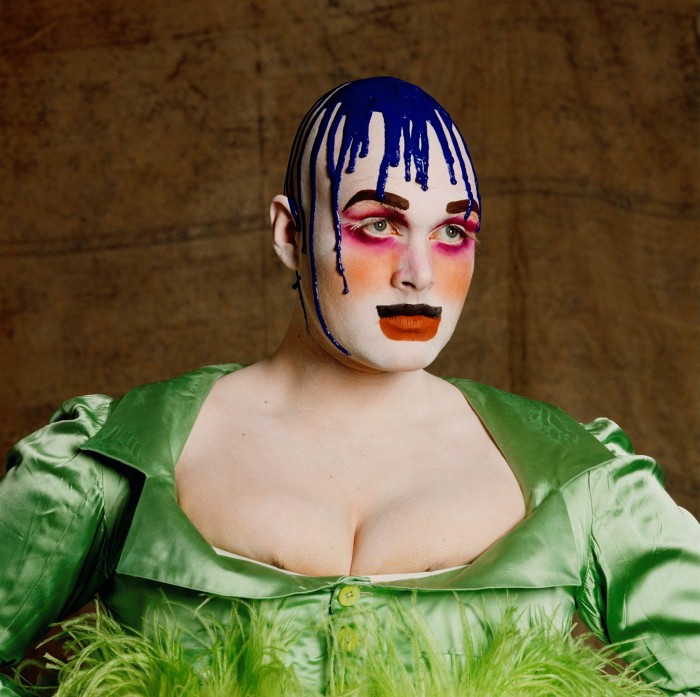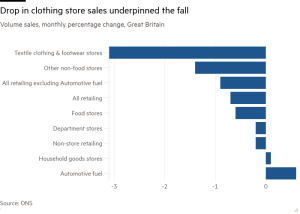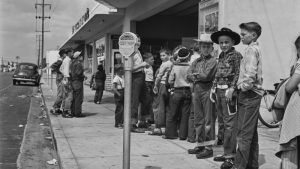Leigh Bowery’s shock creativity is still influencing fashion

Of the many shocking things about designer and performance artist Leigh Bowery, the most is that he is now largely unknown by Gen Z and many millennials. Landing in London from the Melbourne suburb of Sunshine in 1980, he inhabited an analogue era when social media was science fiction. His life was lived largely after dark — most notably at the nightclub he hosted, Taboo.
When Bowery died from Aids on New Year’s Eve 1994, aged 33, he had become an art world star as well as nightlife royalty. Boy George wrote the song Satan’s Butterfly Ball a year after Bowery’s death, in which he hails him as “disco monster terrorist . . . hanging in the Tate with Turner and van Gogh”. And he was all those things. As one of Lucian Freud’s favourite subjects, his numerous depictions of a nude Bowery are in the permanent collections of some of the most prestigious international museums, each worth many millions.

Next February, Tate Modern in London launches a major exhibition about Bowery. This month Outlaws: Fashion Renegades of 80s London opens at the Fashion and Textile Museum in Bermondsey, with an accompanying book. The curators of Outlaws, NJ Stevenson and Martin Green, have spent years on a treasure hunt, assembling rare garments owned by surviving club kids to put everything into their context: a London aglow with DIY creativity perpetuated by cheap rents and squats and hedonism, but all of it in the shadow of institutionalised homophobia, Aids and heroin.
“We have 48 designers represented, and 20 pieces attributed to Bowery,” says Stevenson, “including costumes he made for Michael Clark’s dance productions.” The era showcased, from 1981 to 1988, was never a defined genre, although some major stars — most notably the designer John Galliano — came out of it. “Punk was over, and so was New Romanticism,” says Green. “They didn’t want to call themselves anything — they were just designers who were provocative, creative and competitive.”
Bowery has an ongoing influence on fashion insiders. “It is never ending,” says Fiontán Moran, curator of the Tate Modern show. “You can see references in collections as recent as Galliano’s spring 2024 artisanal collection for Maison Margiela, as well as in the work of Rick Owens, Alexander McQueen, Nasir Mazhar, Gareth Pugh, Richard Quinn and Charles Jeffrey. Many people may recognise his looks, or versions of them through social media, fashion designers and alternative drag, but may not know his name.”
Bowery’s way of working (or indeed not working) has also become an inspiration for a new generation. NJ Stevenson explains the moment Bowery turned away from creating clothes to sell — as his peers BodyMap, Richard Torry and Richmond Cornejo were doing — and focused on himself as his brand: “Susanne Bartsch opened her boutique in Manhattan in 1981 and hosted ‘New London in New York’ fashion shows, which were a huge success. But after the second show, Bowery watched Malcolm McLaren give all his attention to his friend Rachel Auburn and her collection. He was crushed, and it made him think about what he was going to do, going forward. So, after [the] Camden Palace show in 1992, he just made one-offs. And he didn’t want anyone else to look like him.”


Fashion consultant Cozette McCreery was a friend of Bowery’s (and coincidentally also sat for Freud). She sees a lot of what’s going on in London today as an echo of Bowery: “I think that he would admire the work of Max Allen, of Allen and Adcock, for the humour, and the fact that he doesn’t do Fashion Week but makes costume to order for individuals who gel with his aesthetic. That spirit is also there at the Fantastic Toiles pop-up stores, where you’ll find one-off garments by TJ Finley, Waj Hussain and DJ Princess Julia.” Also in that London mix — the eclectic fabrication and shapes of Matty Bovan, whose current collection is typically sculptural, mixing deadstock fabrics in an attempt to blend tropes of Elizabethan portraiture with something futuristic.
Blurring the line between costume and fashion was Bowery’s MO. But so was creating an unsettling mood. Electric Adam is an artist, currently based at the Sarabande Foundation, who creates wearable art using latex, usually covering his face and restricting his breath. “Working with materials that distort your body and face has a profound effect on the audience,” he says. “Instead of being alienating, I feel it creates an immediate, if uneasy, connection. Bowery was a reflection of the fashion world through a broken mirror.”


There are moments in fashion history that draw a straight line to Bowery’s perspective. McQueen’s 2009 Horn of Plenty runway show comes to mind, via its exaggerated patterns and disturbing, theatrical make-up on the models. Adrian Appiolaza’s latest show for Moschino was a homage to 1980s London club culture and featured an abundance of polka dots on fabrics and faces familiar from numerous Bowery ensembles. More literal: Rick Owens’ S/S 2016 Cyclops show had models carried upside down by other models, attached by a harness — an obvious reference to the performances Bowery staged with his wife Nicola Rainbird.
Apart from on Freud’s canvases, Bowery was never seen au naturel. He worked with the award-winning designer Rifat Ozbek for six seasons as a creative consultant, and Ozbek says his favourite Bowery look was “the one he often did during the day — with him in a strange ill-fitting wig and looking like a creepy teacher or serial killer. It was extreme. Which he always was — when he came to fittings, I’d ask if we should cut a dress to the knee or mid-thigh, and he would say ‘no! the armpit!’ And I see some of that spirit in young London designers again today.”

For all the interest in him when he was alive, Bowery was frequently misunderstood. In a TV interview a few months before he died, a journalist introduced him as someone who had “spent much of his life in women’s clothes”. Gendering the work now seems archaic. “It wasn’t about that at all,” says Stevenson. “It was about painstaking research and creating shapes.”
It was also about distortion, which was what made Bowery so radical and influential. Many point to Comme des Garçons designer Rei Kawakubo’s 1997 Body Meets Dress, Dress Meets Body collection as an obvious homage to the lumps and bumps that Bowery, and his collaborator David Cabaret, incorporated into their work. “Bowery and his contemporaries were actually taking from early Comme themselves,” says Stevenson, “it was symbiotic”. Bowery always took it further though. He would pierce and bind and blind himself to create something remarkable.
With two major gallery retrospectives landing, Bowery is about to re-enter the broader conversation. It may detonate a new movement. As Melbourne-based curator and professor Robyn Healy, who was responsible for acquiring key Bowery pieces to the National Gallery of Victoria, says: “He set a fashion precedent that recognised the spectacle of self-expression. His work has inspired other designers and artists to test boundaries for notions of beauty, gender and style. Today that is critical in the fashion industry, to open up new understandings and new experiences.” And don’t we always need the shock of the new?

Outlaws: Fashion Renegades of 80s London, Fashion and Textile Museum, London (October 4 2024 — March 9 2025)
‘Outlaws: Fashion Renegades of Leigh Bowery’s 1980s London’ by Martin Green and NJ Stevenson is published by Scala Arts & Heritage
Leigh Bowery! Tate Modern (February 27 — August 31 2025)
#Leigh #Bowerys #shock #creativity #influencing #fashion



